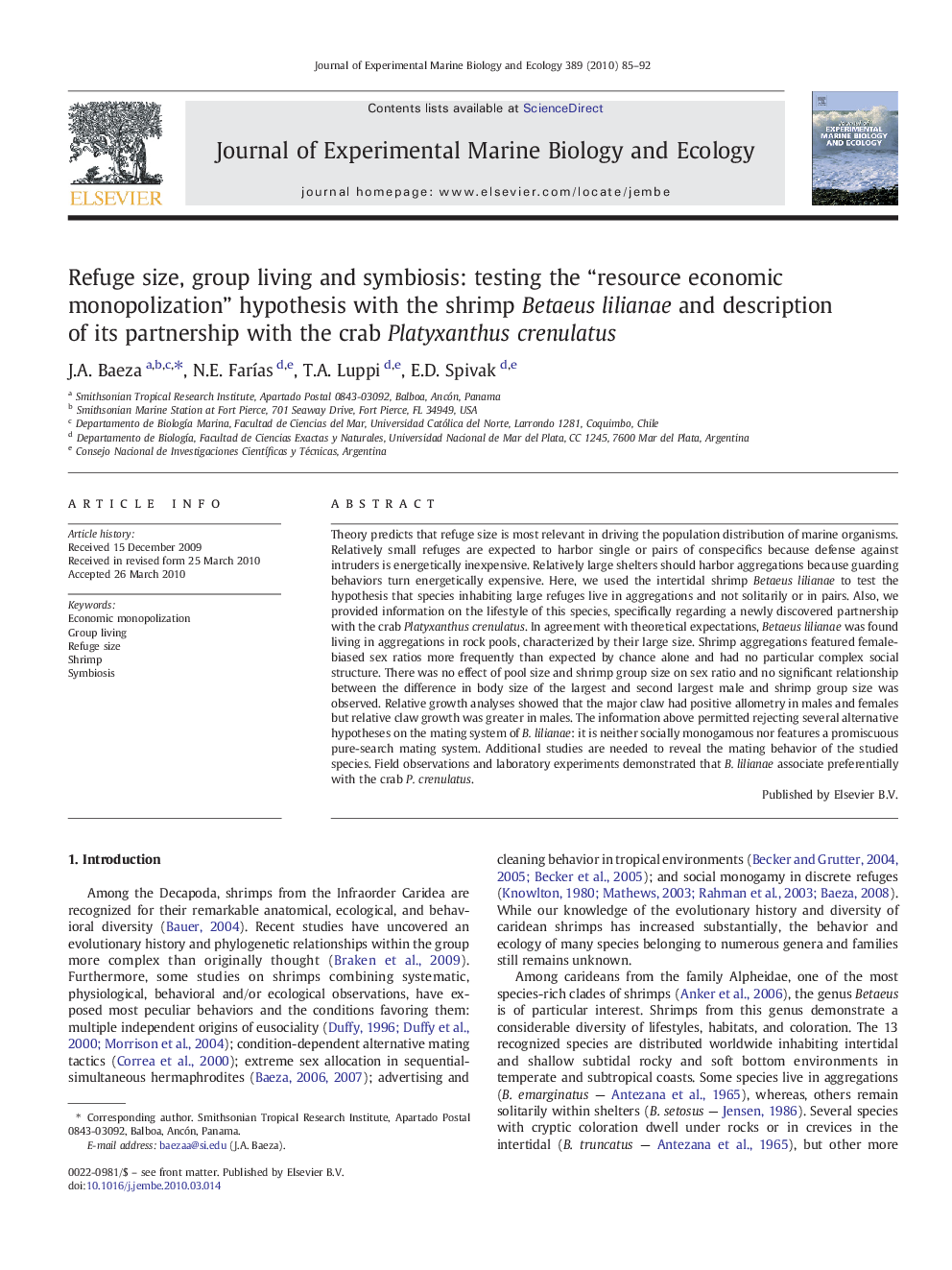| کد مقاله | کد نشریه | سال انتشار | مقاله انگلیسی | نسخه تمام متن |
|---|---|---|---|---|
| 4396664 | 1618471 | 2010 | 8 صفحه PDF | دانلود رایگان |

Theory predicts that refuge size is most relevant in driving the population distribution of marine organisms. Relatively small refuges are expected to harbor single or pairs of conspecifics because defense against intruders is energetically inexpensive. Relatively large shelters should harbor aggregations because guarding behaviors turn energetically expensive. Here, we used the intertidal shrimp Betaeus lilianae to test the hypothesis that species inhabiting large refuges live in aggregations and not solitarily or in pairs. Also, we provided information on the lifestyle of this species, specifically regarding a newly discovered partnership with the crab Platyxanthus crenulatus. In agreement with theoretical expectations, Betaeus lilianae was found living in aggregations in rock pools, characterized by their large size. Shrimp aggregations featured female-biased sex ratios more frequently than expected by chance alone and had no particular complex social structure. There was no effect of pool size and shrimp group size on sex ratio and no significant relationship between the difference in body size of the largest and second largest male and shrimp group size was observed. Relative growth analyses showed that the major claw had positive allometry in males and females but relative claw growth was greater in males. The information above permitted rejecting several alternative hypotheses on the mating system of B. lilianae: it is neither socially monogamous nor features a promiscuous pure-search mating system. Additional studies are needed to reveal the mating behavior of the studied species. Field observations and laboratory experiments demonstrated that B. lilianae associate preferentially with the crab P.crenulatus.
Journal: Journal of Experimental Marine Biology and Ecology - Volume 389, Issues 1–2, 30 June 2010, Pages 85–92